Let’s face it: Lunchtime at the office can be boring.
Many employees eat at their desks, chipping away at work or mindlessly scrolling through their phones.
But there’s one little strategy you can use to change all of it:
The lunch and learn.
These short and informal meetings give you an easy way to improve employee productivity, boost morale, and teach your team something valuable — all in under an hour.
In this article, we’ll show you exactly what a lunch and learn is and how it benefits your business and your employees.
Plus, we’ll take you step by step through setting up your very own lunch and learn program.
What is a lunch and learn?
A lunch and learn is an informal meeting where an employer provides food and brief training for employees. Lunch and learns can provide information on company-specific issues like product updates or broader professional development topics like stress management.
Rather than being a formal requirement, lunch and learns should be voluntary and somewhat relaxed. There should be a clear distinction between lunch and learns and company-wide meetings, mandatory training, and other employee obligations.
Lunch and learns are also an impactful and cost-effective way to develop a better employee experience at your organization.
More and more employees are prioritizing the employee experience when searching for jobs, according to 96% of talent professionals. Despite this trend, only 52% of employees say their company succeeds in providing a positive employee experience.
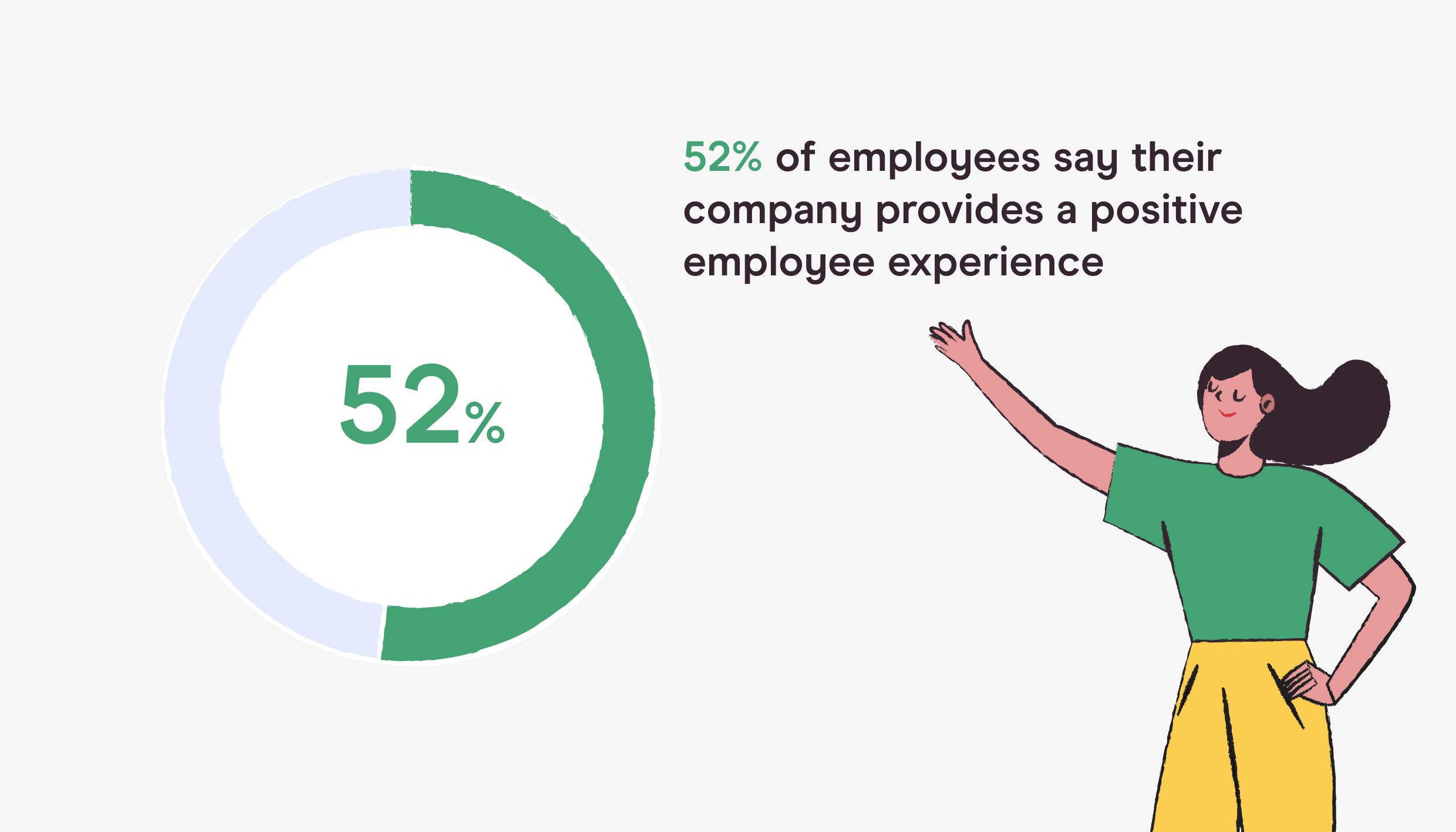
Educational initiatives from companies like Apple have long been a benchmark for a stellar employee experience. These benefits go a long way in supporting and attracting employees throughout the lifecycle of your business.

You don’t have to start your own internal university like Apple in order to curate educational opportunities for your employees. A lunch and learn is a much more approachable first step for most organizations.
When done right, lunch and learns can improve employee engagement and build rapport throughout your organization.
How do lunch and learns benefit your employees?
So how exactly do lunch and learns improve the employee experience?
First of all, it’s hard to go wrong when you’re offering free lunch. Perks like this make employees feel valued.
And 73% of employees who feel valued by their company care more about work than their counterparts. 67% of employees go above and beyond their duties, and 71% collaborate more with their teams.
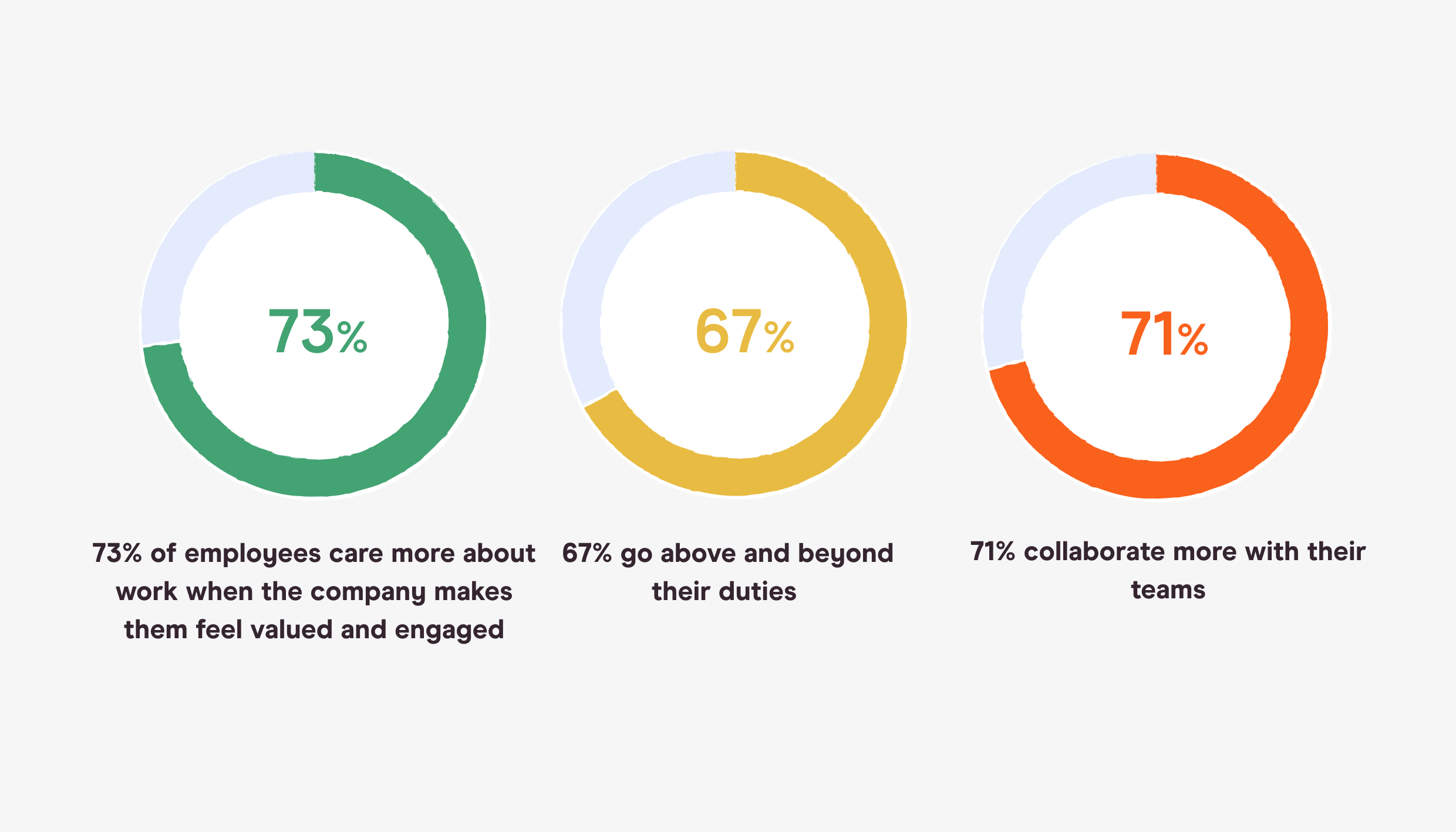
All from a small gesture that makes your employees feel valued.
Lunch and learns provide other benefits to your employees too. A lunch and learn is an opportunity to get to know coworkers they may not work with regularly, increasing the potential for collaboration in the future.
Employees can also use lunch and learns to gain skills or knowledge that they may not have time for otherwise due to their work or personal schedules.
Ultimately, lunch and learns give your employees an approachable method for professional development, all while promoting a culture of learning within your company.
Do lunch and learns bring value to your business?
It’s clear that educational efforts like lunch and learns do a lot for your employees’ well-being.
But how does a lunch and learn improve your business overall?
In many ways, it turns out.
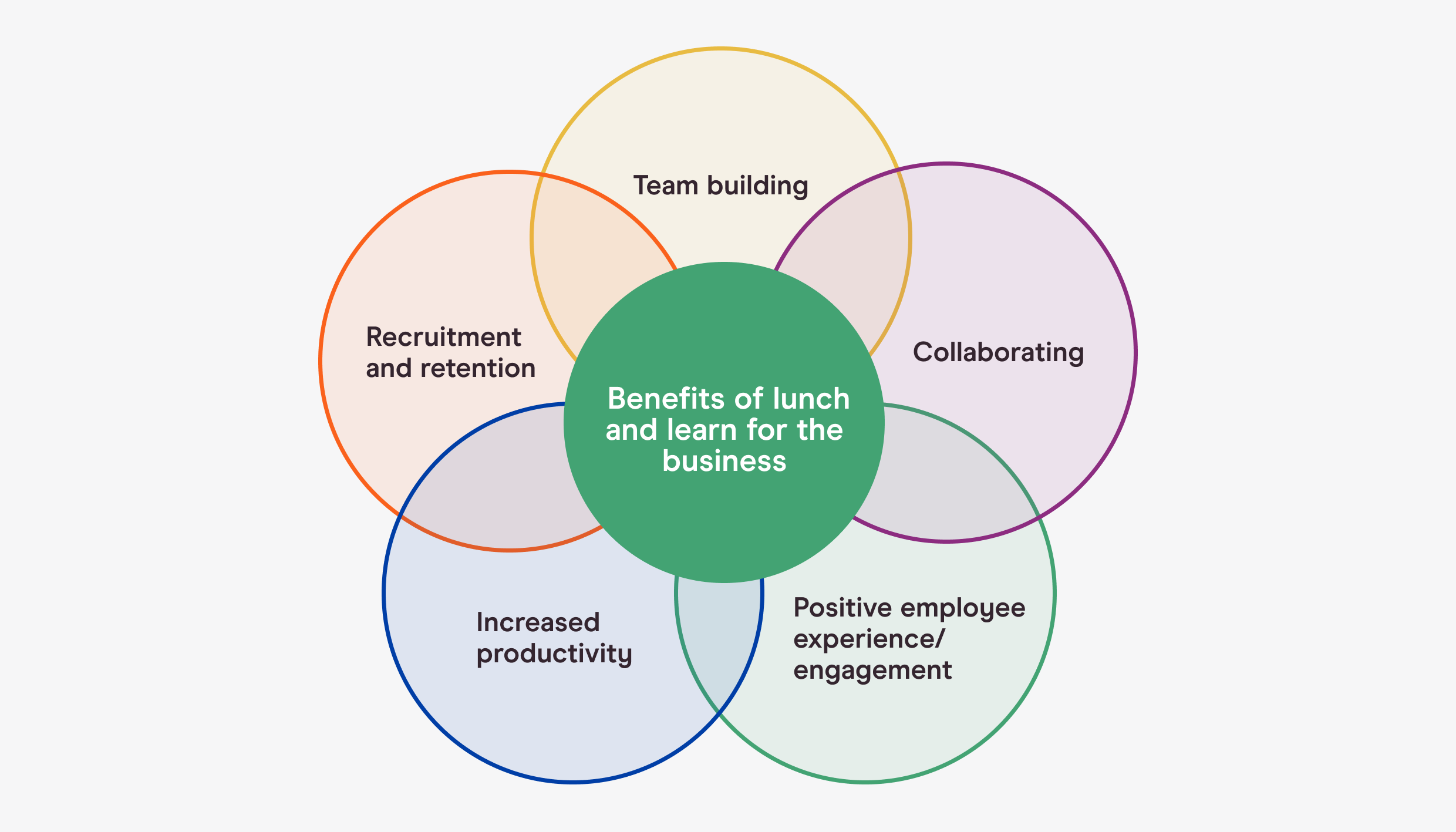
Lunch and learns improve the employee experience and increase employee engagement, both of which lead to better results for your business.
77% of companies found that focusing on employee experience increased retention. In fact, companies with high ratings on their educational and training opportunities have a 53% lower attrition rate than other companies.
Employee productivity also soars when companies cultivate a positive employee experience through perks like lunch and learns. 71% of companies improve the employee experience as a way to improve productivity.
Companies that successfully improve business outcomes through employee experience initiatives also earn good press for their efforts.
Adobe is a good example.
Through their events and classes that focus on employee storytelling and well-being, Adobe has fostered a culture that has landed them on numerous lists of the best places to work — for more than 20 years.

The benefits of lunch and learns for your business keep going.
You’ll make your employees feel valued. In turn, they’ll become more engaged, productive, and innovative.
You’ll invest in your employees’ personal and professional development. They’ll gain the skills and ideas they need to push your business to new heights.
In short, starting a lunch and learn program is a smart business move and an effective management tactic.
6 steps for running a successful lunch and learn
Building a culture of learning can take a lot of time and effort, but hosting your first lunch and learn is relatively simple.
While it might be tempting to launch a full-scale knowledge-sharing campaign throughout your organization, it’s smarter to start small.
These steps will take you through how to host your first lunch and learn program successfully.
1. Choose a date and frequency
The first step in hosting a successful lunch and learn is to pick a date and time that works for as many team members as possible.
Even though your event will take place at lunchtime, employees may feel more stressed during busy times like payroll day or reporting season, or when they have an approaching deadline.
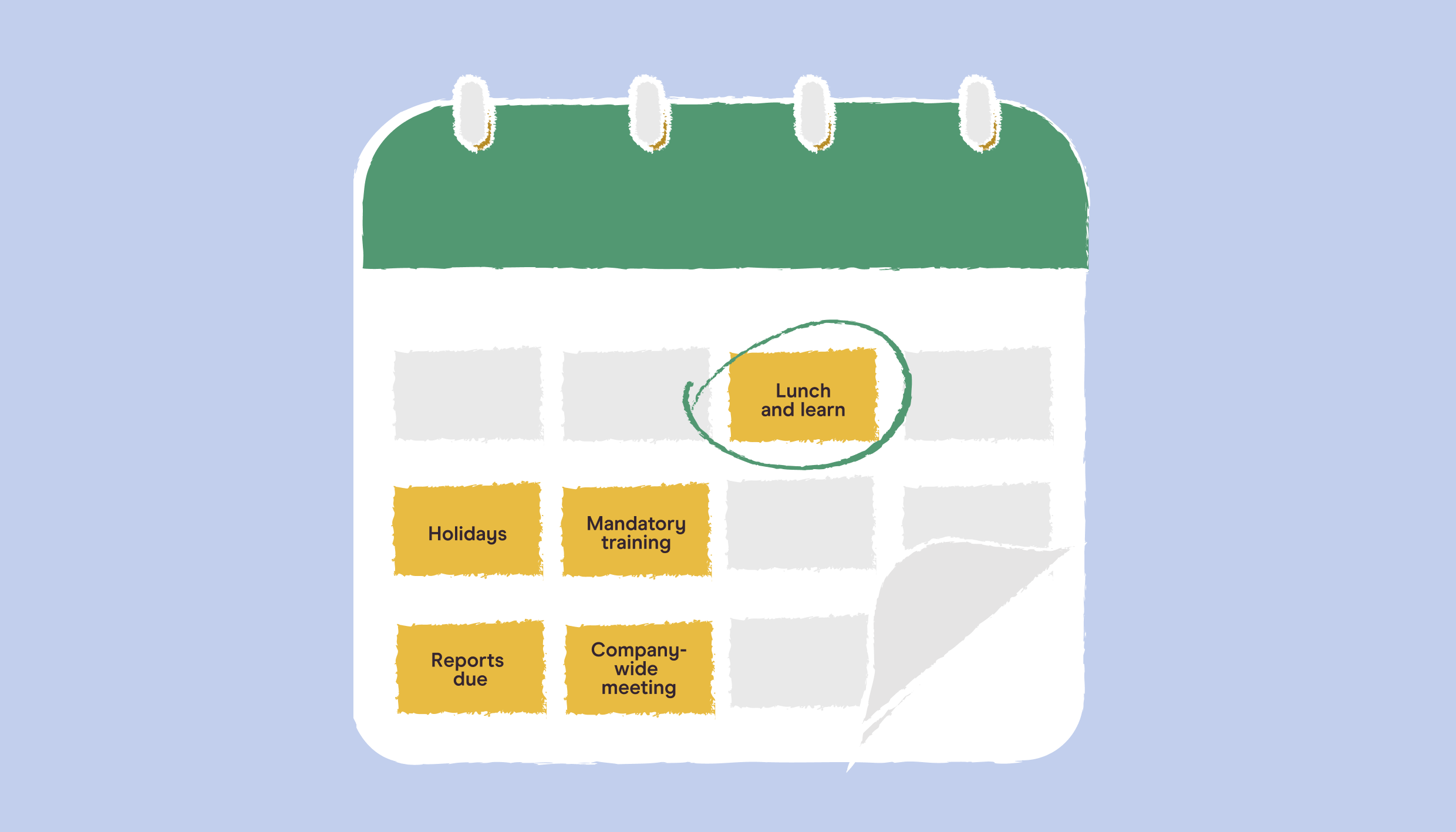
It’s smart to host your first lunch and learn during a slower period for your company, if possible.
You’ll also want to avoid days where team members commonly leave early or work from home.
Choosing the right date will help employees be more willing to attend your lunch and learn.
It’s important to make your lunch and learn as easy as possible for your employees to attend without making them feel like they are obligated to do so.
2. Decide on a worthwhile topic
Your lunch and learn topic needs to be interesting, beneficial, and not too serious.
It’s a great place to help employees with personal development or close the professional skills gap, a significant issue according to 74% of HR professionals.
Here are a few ideas for your first lunch and learn topic:
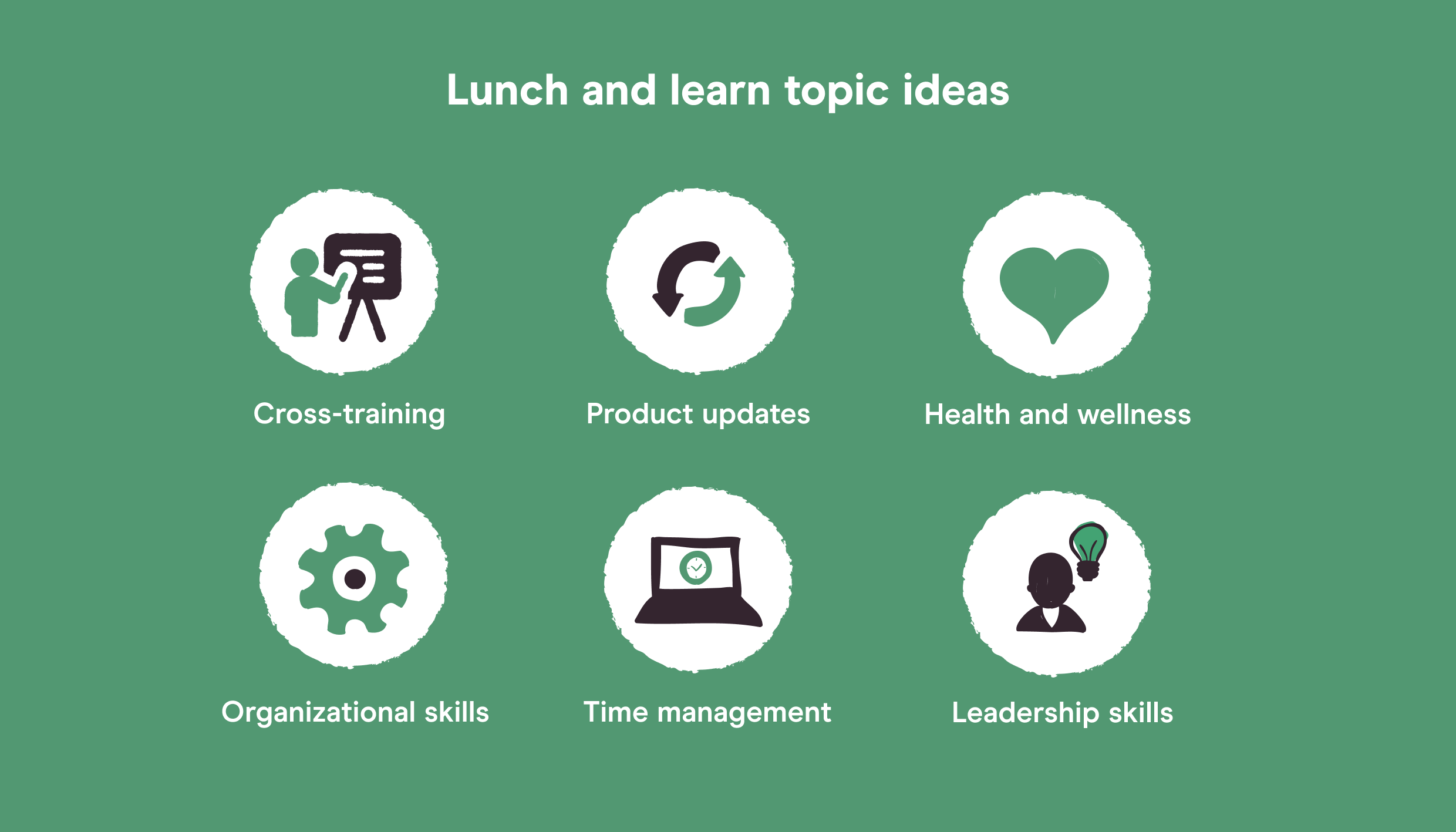
- Cross-training or product updates
- Stress management/work-life balance
- Time management and organizational skills
- Leadership skills and public speaking
- Employee storytelling or skill-sharing
Lunch and learns are not the place for sensitivity training or potentially triggering topics. You’ll also want to avoid mandatory training sessions or critical company updates.
These topics are important, so you should conduct those meetings in a more formal setting where everyone understands that they are expected to attend. Lunch and learns are informal, so the topics should be more lighthearted and relaxed.
As you choose your topic, you’ll also need to choose a presenter. This could be yourself, a colleague, a skilled employee, or an outside speaker.
It can be helpful to think of lunch and learns as a sort of TEDTalk. You want to choose an interesting topic presented by a knowledgeable speaker that can be digested in a short time frame.
3. Select a popular menu
Let’s be honest: a lot of your employees will be slightly more interested in the “lunch” rather than the “learn” of your lunch and learn.
That’s okay — in fact, it’s sort of the point.
Because the free lunch will be a big draw for your team, it’s important to pick a menu that as many people as possible will enjoy.
Consider popular favorites like pizza, sandwiches, or salads. If you have a big enough budget and a small enough team, you can also consider doing custom lunch orders for team members who sign up in advance.
It’s also important to be mindful of dietary restrictions as much as possible. While you may not be able to meet every single person’s dietary needs, communicating openly about what food options you’ll have and what you can and can’t offer can go a long way.
Another critical piece of offering free lunch is to make sure there’s enough for everyone. It’s far better to overorder than underorder.
If needed, you can try having an advance sign-up sheet to get a headcount to order the right amount of food. Be sure to order a little extra regardless — just in case.
4. Advertise your lunch and learn
Once you’ve nailed down the logistics of your lunch and learn, it’s time to advertise.
The best way to advertise your lunch and learn will depend on how your company typically sends out information. Send a company-wide email, post a flyer in the breakroom, or post a message to the company Slack to spread the word.
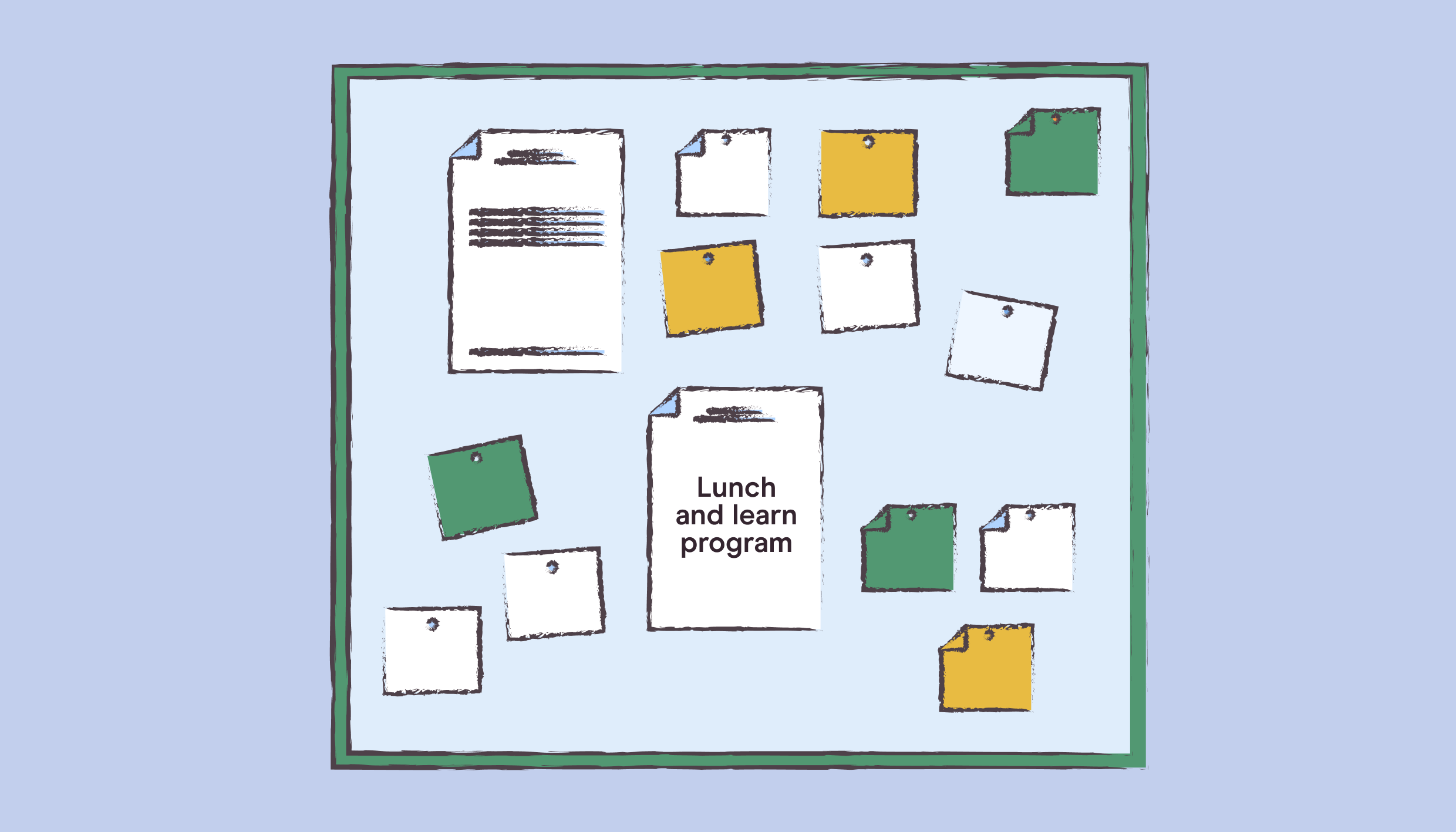
If you have limited space or are requesting the employees sign up in advance, make it as easy as possible for them to do so. Create a simple Google form or spreadsheet so employees can do it right away.
Send a follow-up a day or two before your lunch and learn, but don’t bombard people with reminders. You don’t want to annoy them out of attending.
Instead, try to personally invite team members to the lunch and learn when you can. Give them more information or tell them why you think they would personally enjoy the event.
The personal touch can have a big impact.
5. Stick to your allotted time
On the day of the lunch and learn, the most important thing is to be respectful of your employees’ time.
Make sure you start the lunch and learn promptly, and the food arrives on time.
Most importantly, don’t let your speaker go over the allotted time your team members have for their lunch break. At most, your lunch and learn should last an hour.
It’s also important to create a relaxed environment where people can leave early if they need to attend another meeting or handle a client call.
Set the expectation that people should listen to the presentation in exchange for free lunch, but avoid being overly strict about it.
6. Collect employee feedback for future sessions
After the lunch and learn, find out what worked and what didn’t in the eyes of your staff.
An easy way to do this is to send a post-event survey — no more than a few questions — to figure out what part of the presentation went well and what you can improve next time.
You can ask for feedback on the topic, time, location, and menu. Don’t ask too many overly detailed questions, or you may not get as many responses.
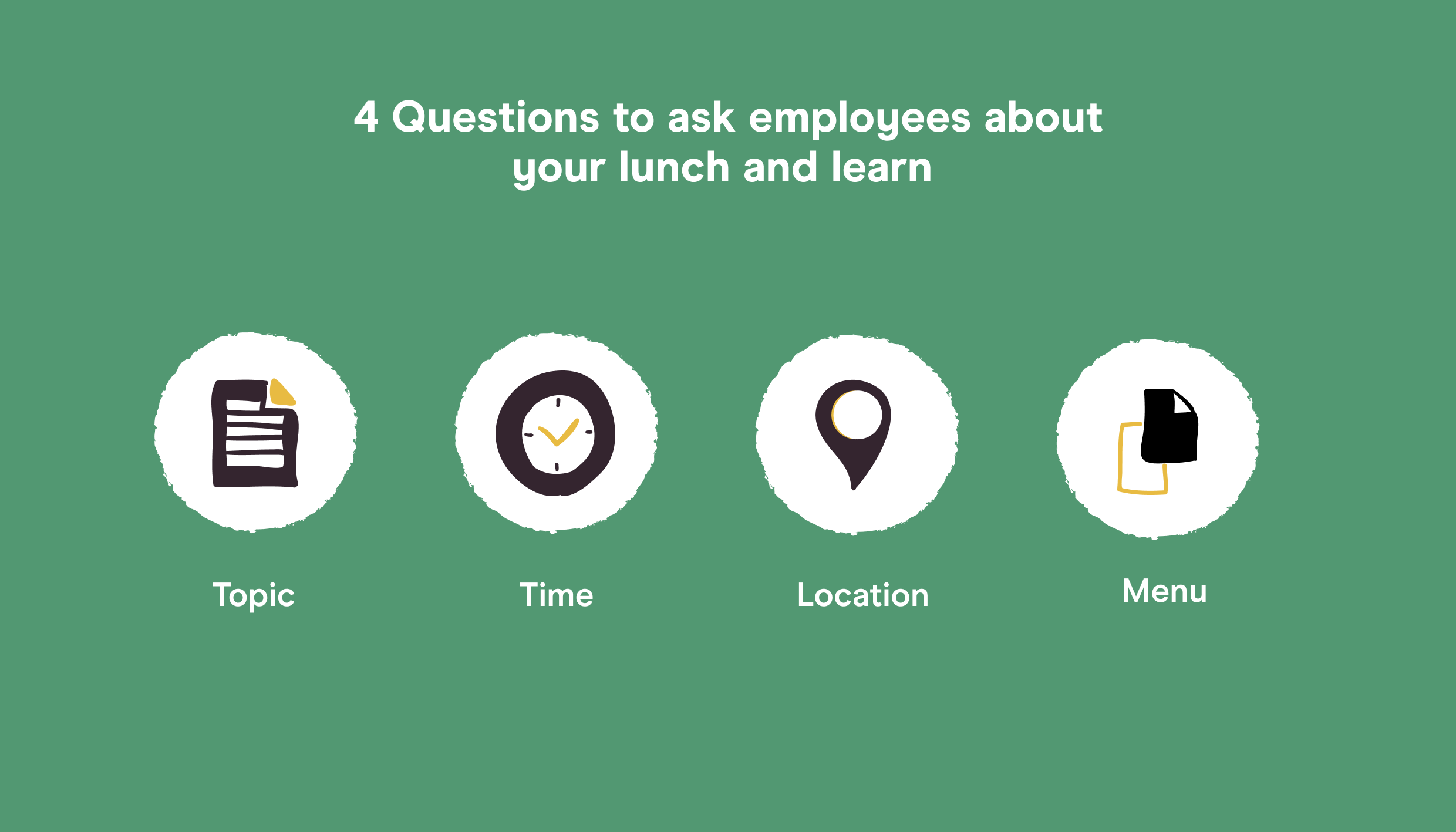
You can also have informal conversations with attendees over the next few days to ask them what they liked about the event.
It’s also smart to accept suggestions for future topics. When employees are excited about the topic, they’ll be more likely to attend your future lunch and learns.
Start planning your next lunch and learn today
Lunch and learns bring a lot of value to your business and the lives of your employees. They improve employee engagement, boost productivity, and increase retention rates.
By following the steps we’ve outlined here, you can create a lunch and learn program in your workplace.
Check out Pareto Labs for topic ideas for your next lunch and learn.

